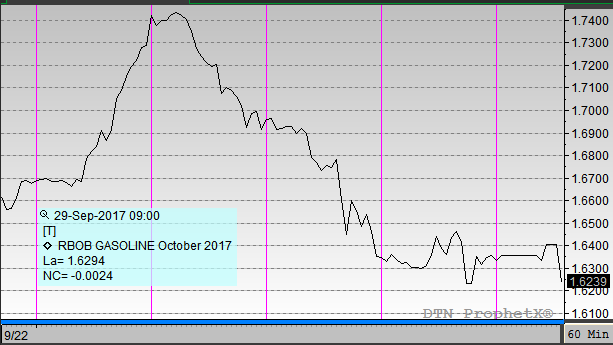
Week in Review
Fuel prices this week have fluctuated dramatically across the different products in the market. Crude and diesel both posted modest gains for the week, but gasoline has been a huge loser this week.
Crude prices are up $.90 between Monday’s opening price and today’s open, rising from $50.68 to $51.58 today. Prices began the week with a large $1.40 price gain on Monday, and markets haven’t looked back since. Crude markets have been strengthening for several reasons – strong refinery inputs, record oil exports, and this week’s surprise crude stock draw. Prices reached a peak on Thursday at $52.86, amid concerns over northern Iraq oil fields; however, prices fell lower after hitting their peak.
Diesel prices are in line with where they began the week, with gains of less than a penny. Diesel prices opened the week at $1.8125, and quickly jumped as high as $1.8646 on Tuesday before slowly working back down to the levels we experienced this morning. As we’ve mentioned before, recovery efforts and strong agricultural demand are keeping diesel prices elevated. We mentioned this week that Hurricane Harvey has 7% of the entire U.S. fleet tied up, requiring significant diesel fuel consumption.
Gasoline has struggled this week. Mt. Gasoline, as the image below seems to reflect, is made up of strong enthusiasm on Monday followed by a week of disappointing news for traders. As the week began, news came out that some refineries in the Northeast were running out of crude supply as Hurricane Maria disrupted shipping channels. The price affect has weakened now that Maria is passed and resupply has occurred. Mixed with that, both the API and the EIA showed a surprise build in gasoline stocks, which markets weren’t quite ready for given the substantial draw downs we’ve seen in the past few weeks due to Texas refinery outages.
Also important on the gasoline front, the EPA this week called for comments on a potential reduction in Renewable Fuel Standard (RFS) volume requirements. The EPA statement was based on a court ruling that changed the focus of the standard from consumer data to supply data. Previously, the EPA forecasted consumption, and based the standard on expected demand. The court ruling requires they evaluate whether there is sufficient domestic supply, and if not, to reduce the standard. The EPA is also requesting commentary on whether the current standard is negatively affecting the economy.
Recall that, under the RFS, every gallon of petroleum fuel requires refineries to retire a certain number of Renewable Identification Numbers (RINs). Each gallon of biofuels creates a certain, legally defined amount of RINs. If the RFS requirement is lowered, demand for RINs would fall, meaning Ethanol (D6) RIN prices could fall from their current level of roughly 65-70 cents down to 30 cents or lower, according to Citi Bank. Since lower RIN prices means lower refinery costs, the cost of gasoline could fall slightly, meaning that the EPA’s recent announcement would be bearish for gasoline prices.
Overall, the oil market remains elevated compared to pre-Harvey levels, with gasoline being the notable exception. Gasoline prices tend to fall in September anyways as summer gasoline requirements end, so weak gasoline prices should not detract from the still bullish mentality being felt in the market. Prices have stayed above $50 for the longest stretch of time since the beginning of the year, and so far show no sign of weakening. With oil supplies tightening and diesel demand increasing, expect prices to remain elevated for now.
This article is part of Daily Market News & Insights
Tagged:
MARKET CONDITION REPORT - DISCLAIMER
The information contained herein is derived from sources believed to be reliable; however, this information is not guaranteed as to its accuracy or completeness. Furthermore, no responsibility is assumed for use of this material and no express or implied warranties or guarantees are made. This material and any view or comment expressed herein are provided for informational purposes only and should not be construed in any way as an inducement or recommendation to buy or sell products, commodity futures or options contracts.








